








| Morning-glory Plume Moth (Emmelina monodactyla (Linnaeus, 1758)) |









|
|
Scientific name: Emmelina monodactyla (Linnaeus, 1758) Common name: Morning-glory Plume Moth Other names: T-Moth French name: Ptérophore commun Order: Lepidoptera Suborder: Microlepidoptera Family: Pterophoridae Subfamily: Pteriphorinae Wingspan: 18-27 mm. Biotope: Any habitat with Bindweeds. Geographic area: Europe, central Asia east to Japan, North Africa, North America. Flight time: September to April of the following year, but you can observe adults all year long. Number of generations : 2, with an overlapping of the two broods. You can observe the latest caterpillars of the first brood at the same time as the first caterpillars of the second brood. Caterpillar: Hairy, greenish yellow with a wide green dorsal stripe. A thin longitudinal interrupted yellow line runs in centre of this green stripe. Host plant: Bindweeds (Convolvulus sp. and Calystegia sp.) and sometimes on Morning glories (Ipomoea sp.), Saltbushes (Atriplex sp.) and Goosefoots (Chenopodium sp.) |
As on other members of the family, the Morning-glory Plume Moth's wings end with five feathery "fingers". Its posture, wings open with a right angle, looks like the shape of the T uppercase character. The forewing is divided into two parts, the hind wing is divided into three parts. However the wings are hold tightly rolled up to form a single shape. This is the origin of the species name monodactyla, "one single finger" in Greek language. The fore wings are pale grey to pinkish brown with one dark longitudinal mark near the apex. There is a dark spot on the costal edge at about one third of the wing length starting from the base. The first lobe of the fore wings extends as a curved point. The tip of the rolled up wings appears thin, slightly curved on the front edge and straight on the back edge. The abdomen shows a pale dorsal stripe with a median alignments of dark brown dashes. The median tibias have a slightly swollen tip. Spurs on the hind legs are of different length in each pair. Plume moths of the Stenoptilia genus show lobes on the fore wings which are rather obliquely cut. The second lobe appears shorter and so the wings do not look like "a single finger". Spurs on the hind legs are of equal length in each pair. There is no dark longitudinal mark near the apex of the fore wings but a dark spot on the angle between the two lobes. There is also a possible confusion with Emmelina argoteles which is rarer, slightly smaller and found in damp habitats. Morning-glory Plume Moths are attracted to light. Adults of the second brood over winter sheltered under dense vegetation like Ivy per example. |
| [To know more about the Morning-glory Plume Moth] [Next picture] [Top] |

|
The spurs on the hind leg tibias, showing different length in each pair, are clearly visible on this picture. This is sometimes difficult to evaluate and misleading, depending on the angle of view, but I think that this is OK here. |
| [To know more about the Morning-glory Plume Moth] [Next picture] [Previous picture] [Top] |
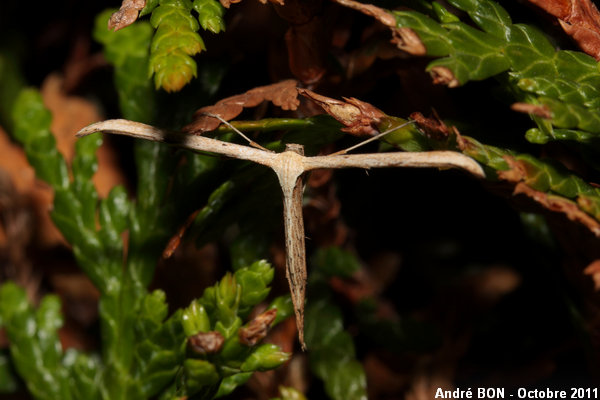
|
Impossible to see the hind leg spurs on this picture. The shape of the apex of the wings and the pattern on the upper side of the abdomen indicate the Emmelina monodactyla species. |
| [To know more about the Morning-glory Plume Moth] [Next picture] [Previous picture] [Top] |
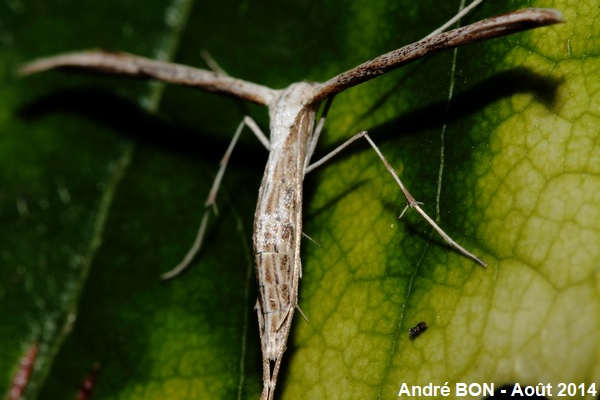
|
You clearly see here the spurs on the hind legs which are really a different length within the same pair. |
| [To know more about the Morning-glory Plume Moth] [Next picture] [Previous picture] [Top] |
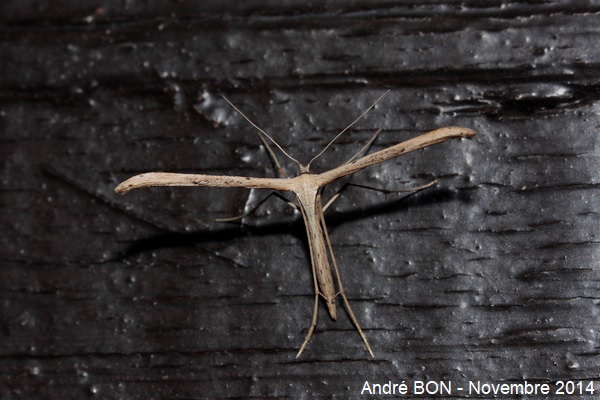
|
All the identification criteria listed for the Morning-glory Plume Moth species are visible on this picture. |
| [To know more about the Morning-glory Plume Moth] [Next picture] [Previous picture] [Top] |

|
The letter T of OcTober, certainly attracted to light... |
| [To know more about the Morning-glory Plume Moth] [Next picture] [Previous picture] [Top] |
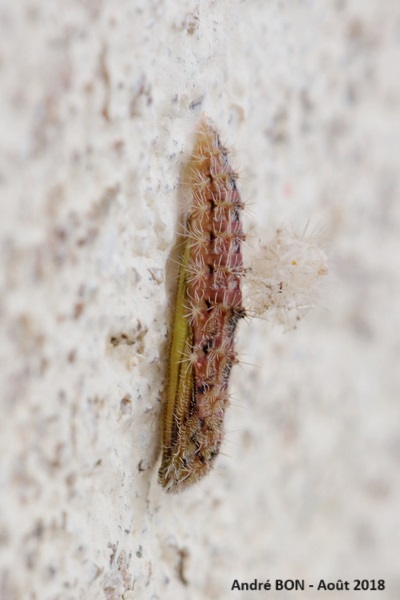
|
I observed this chrysalis on an old farm wall. It has the typical look of chrysalis of the Pterophoridae family. I am not skilled enough and I do not know if it is possible on a simple photo to identify the species. |
| [To know more about the Morning-glory Plume Moth] [Next picture] [Previous picture] [Top] |

|
Upper side view. |
| [To know more about the Morning-glory Plume Moth] [Next picture] [Previous picture] [Top] |
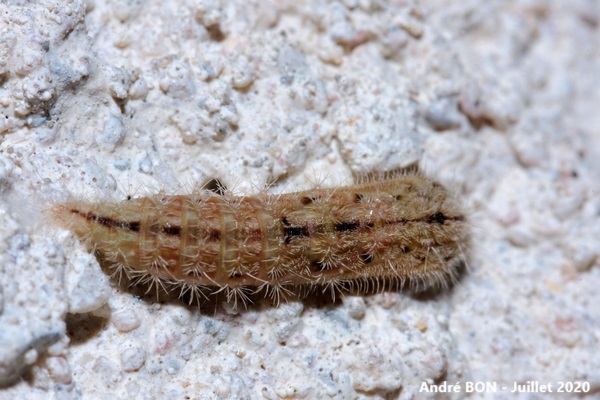
|
This wall of the old farm, facing northeast, seems to be appreciated by Plume Moth caterpillars which must come here to pupate. |
| [To know more about the Morning-glory Plume Moth] [Previous picture] [Top] |

|
These Plume Moth caterpillars show clear variations in colour. Is this related to the species, the host plant, the age? |